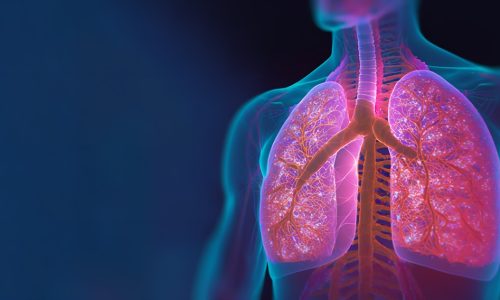Understanding Respiratory Issues: Lungs and Chest
Common Causes of Respiratory Issues

Several factors contribute to respiratory problems, and the cause often determines the severity and type of treatment required. One of the most prevalent causes is infection, which can be bacterial, viral, or fungal in nature. Conditions like pneumonia, bronchitis, and tuberculosis fall under this category. Environmental factors such as air pollution, cigarette smoke, industrial chemicals, and allergens like pollen or pet dander can also trigger or worsen respiratory issues. Additionally, chronic diseases like asthma and chronic obstructive pulmonary disease (COPD) are long-term conditions that obstruct airflow and make breathing difficult. Genetics may also play a role, particularly in conditions like cystic fibrosis or alpha-1 antitrypsin deficiency. Lastly, autoimmune disorders, such as sarcoidosis or lupus, can affect lung function indirectly by causing inflammation or scarring in lung tissue.
Recognizable Symptoms of Lung and Chest Disorders
Symptoms of respiratory problems vary widely depending on the underlying cause, but several signs are commonly observed. Shortness of breath or difficulty breathing is one of the most noticeable symptoms and may occur suddenly or gradually. This is often accompanied by persistent coughing, which may be dry or produce phlegm or mucus. In infectious conditions, the cough might bring up yellow or green sputum and sometimes even blood. Chest pain or tightness is another major symptom, especially in conditions like pleuritis or pulmonary embolism. Some individuals experience wheezing, a high-pitched sound during breathing, which is characteristic of asthma or COPD. Other general symptoms include fatigue, fever, and weight loss, especially in chronic or infectious respiratory conditions. Recognizing these signs early can make a significant difference in treatment outcomes.
Diagnosis and Medical Evaluation
Diagnosing respiratory issues typically involves a detailed medical history and several diagnostic tests. Doctors usually begin with a physical examination, checking for abnormal breath sounds, chest expansion, and signs of infection. Chest X-rays and CT scans help visualize abnormalities in lung tissues, while pulmonary function tests (PFTs) assess how well the lungs are working. In cases of suspected infections, sputum culture, blood tests, or bronchoscopy may be performed to identify pathogens. Sometimes, allergy tests or autoimmune screenings are needed when environmental or immune-related causes are suspected. Accurate diagnosis is the cornerstone for determining the right course of treatment.
Treatment Options for Respiratory Conditions

The treatment for respiratory problems depends entirely on the cause, but it generally involves a combination of medication, lifestyle adjustments, and sometimes surgical intervention. Antibiotics, antivirals, or antifungals are used to treat infections, while bronchodilators and corticosteroids are commonly prescribed for asthma and COPD to open airways and reduce inflammation. In cases of severe allergic reactions, antihistamines or immunotherapy may be recommended. Oxygen therapy is often necessary for patients with advanced lung diseases who experience low oxygen levels. In more serious conditions, lung surgery, such as lobectomy or lung transplant, might be considered. Additionally, pulmonary rehabilitation—a program that includes exercise, education, and breathing techniques—can significantly improve quality of life for patients with chronic respiratory diseases.
Role of Lifestyle and Prevention
Preventing respiratory issues starts with maintaining a healthy lifestyle and avoiding known triggers. Quitting smoking is perhaps the single most effective way to reduce the risk of developing severe lung diseases like COPD or lung cancer. It’s equally important to avoid secondhand smoke and reduce exposure to air pollutants, dust, and industrial chemicals, especially for people working in high-risk environments. Wearing masks, especially during flu seasons or in polluted areas, can also help. Keeping your home well-ventilated and using air purifiers may reduce allergens and pollutants indoors. Regular exercise, a balanced diet, and hydration help strengthen the immune system and lung capacity. Vaccinations like the flu shot and pneumococcal vaccine are important for high-risk individuals, especially the elderly or those with chronic illnesses.
When to Seek Medical Attention
While many respiratory issues start with mild symptoms, it is crucial to know when to seek professional help. Persistent coughing, especially if it lasts more than three weeks or produces blood, should not be ignored. Likewise, sudden chest pain, difficulty breathing, or a blue tint to the lips or fingers indicate a medical emergency and warrant immediate attention. Individuals with underlying conditions like asthma or COPD should have a clearly defined action plan and be in regular contact with their healthcare provider to manage flare-ups
Conclusion
Respiratory issues affecting the lungs and chest can range from temporary infections to chronic, life-threatening diseases. Recognizing the causes, identifying the symptoms, and pursuing timely diagnosis and treatment are critical for improving outcomes and maintaining a good quality of life. With proper lifestyle changes, preventive care, and medical management, many respiratory conditions can be controlled effectively, allowing individuals to breathe easier—both literally and figuratively.